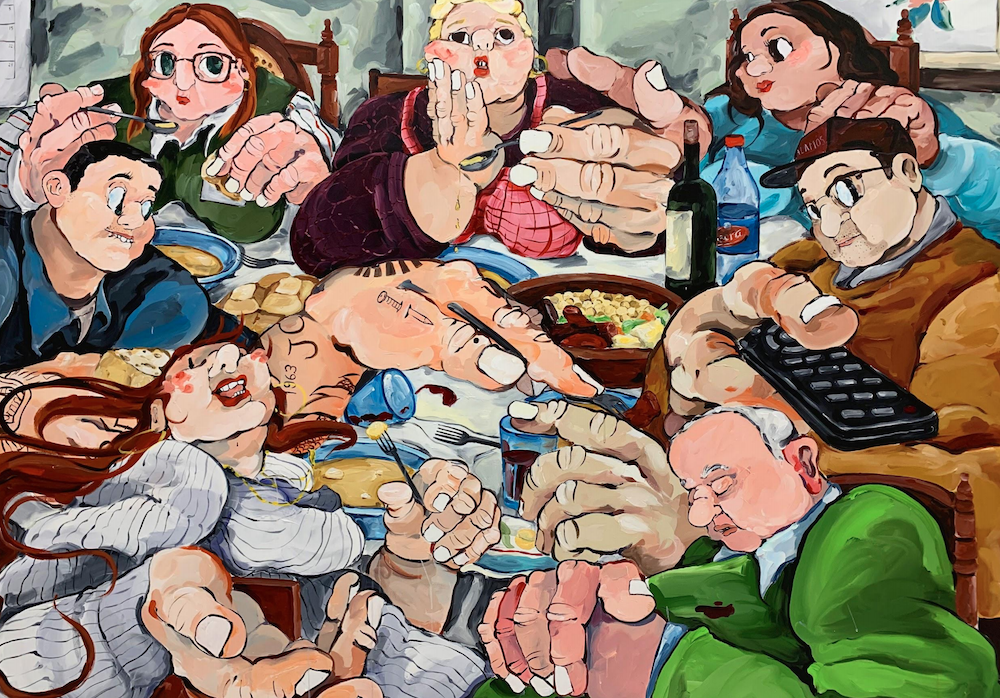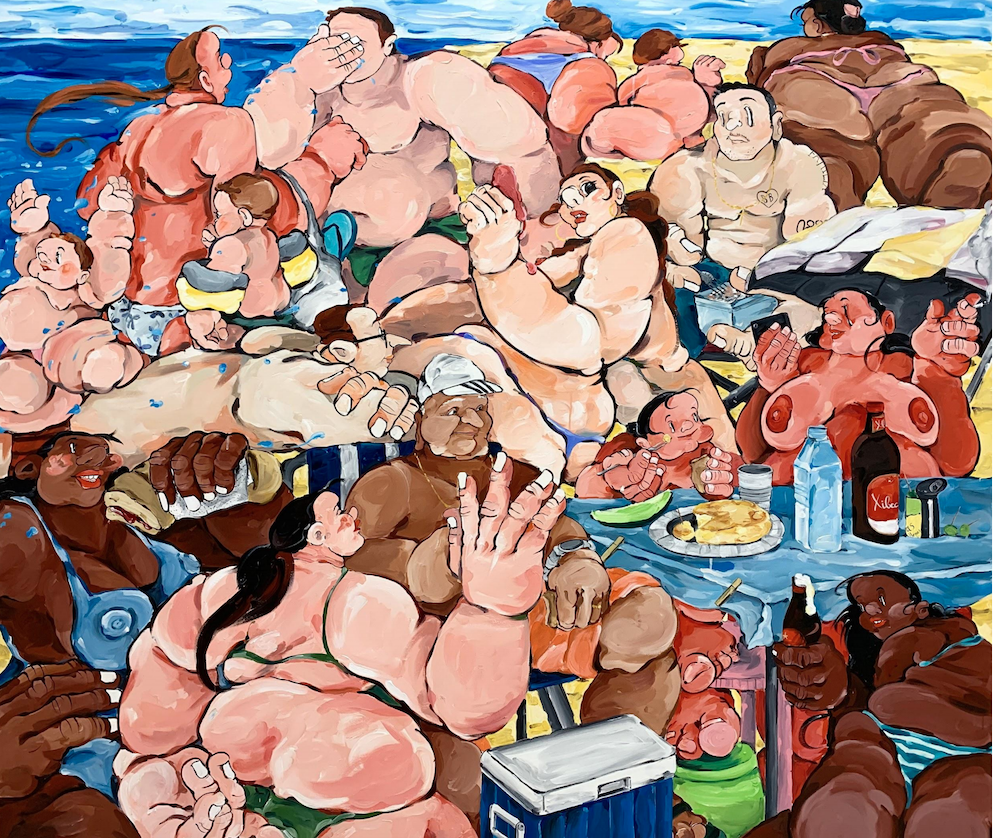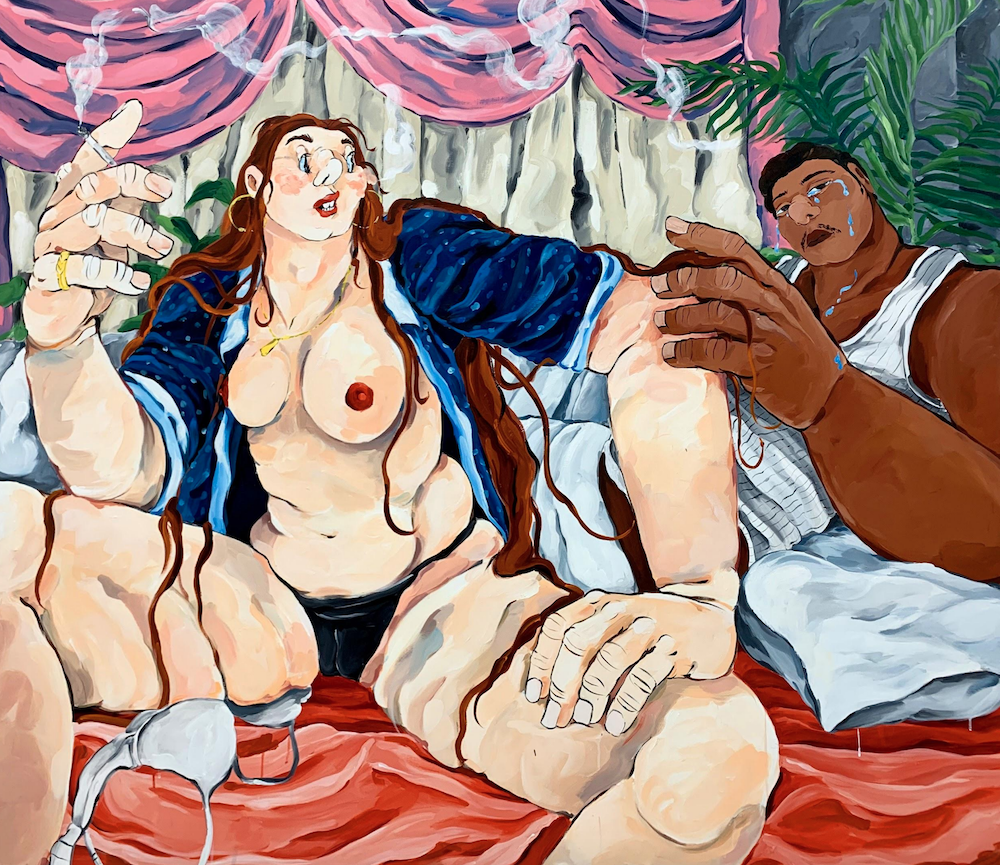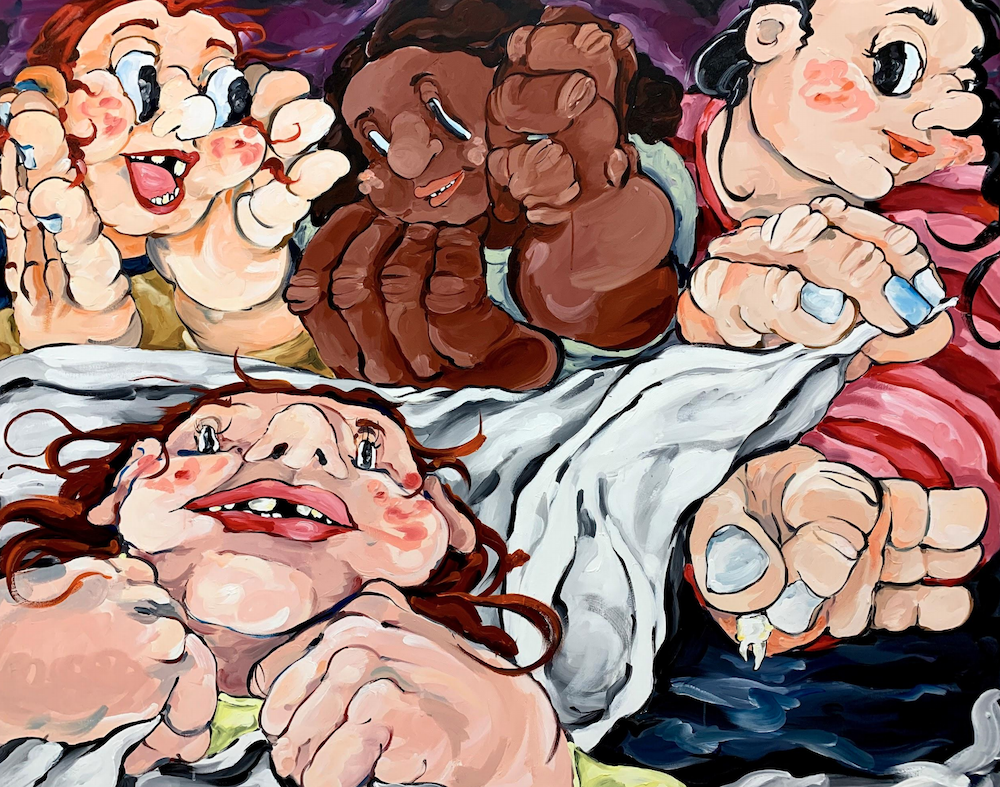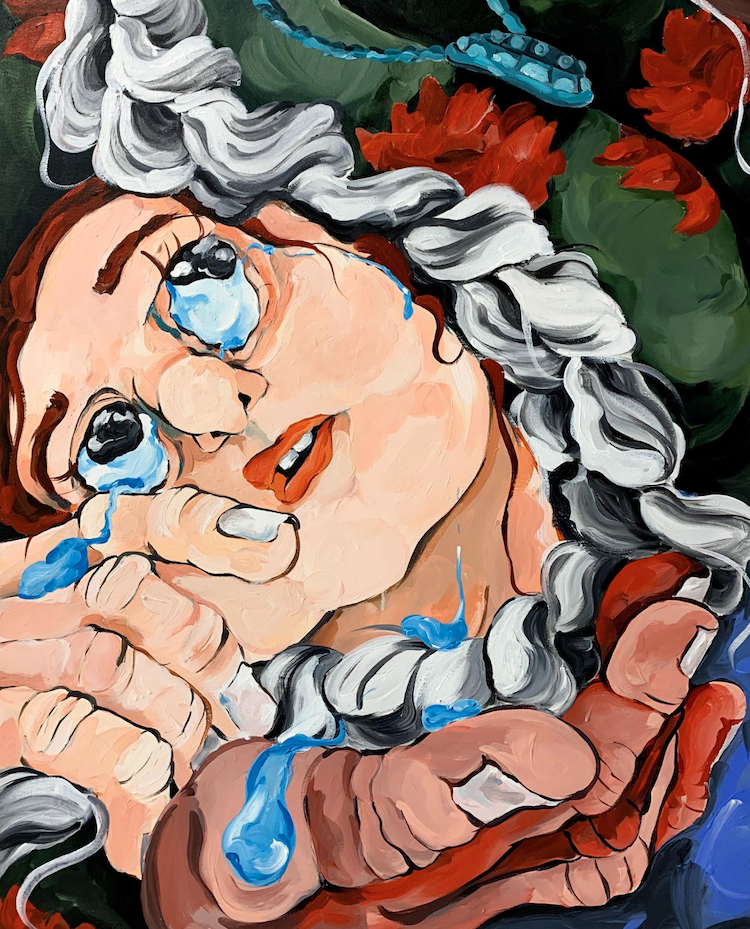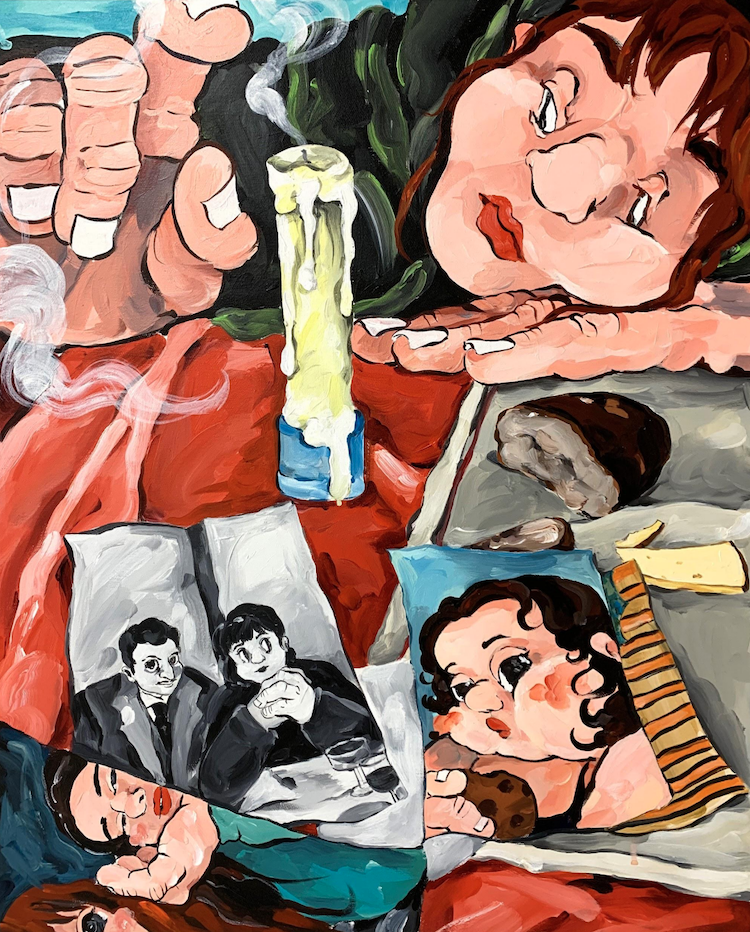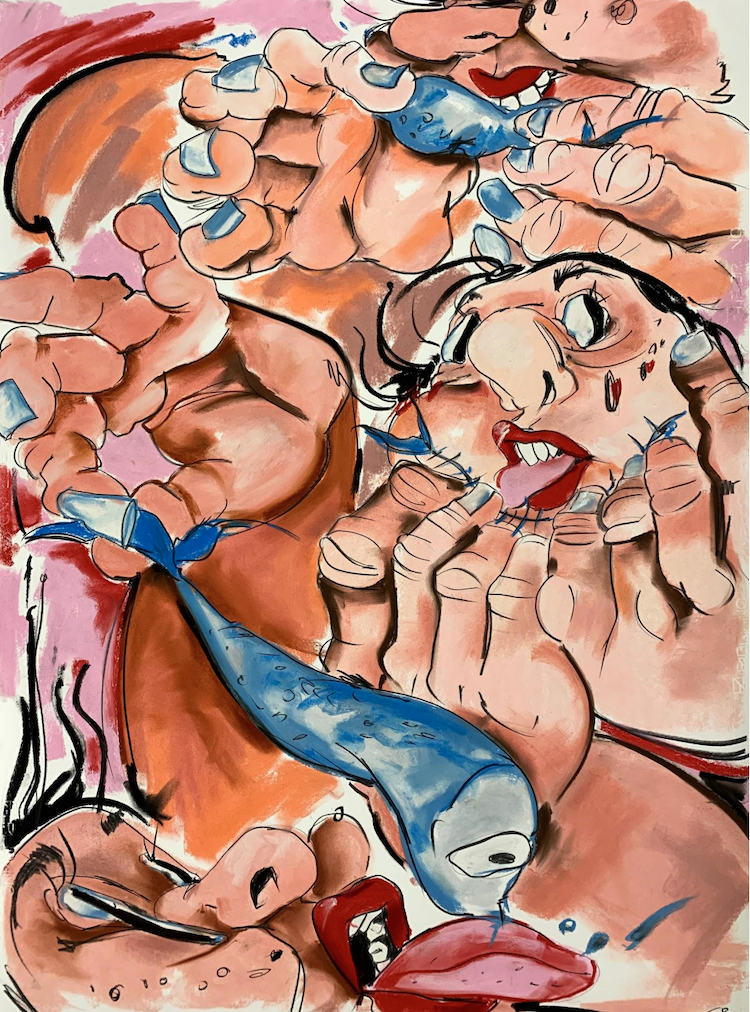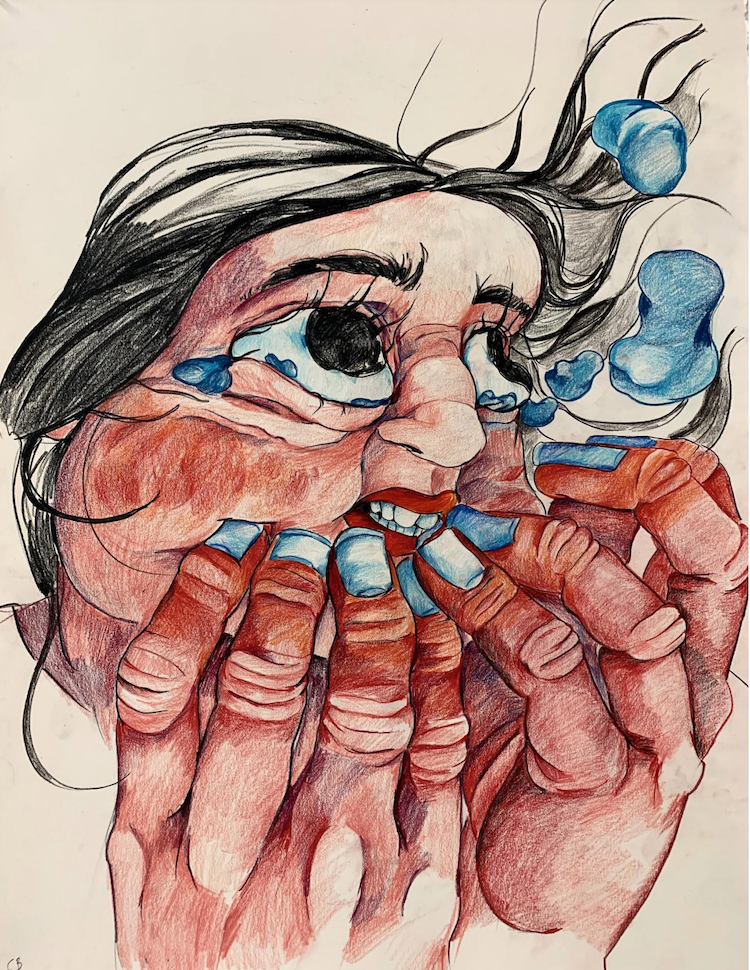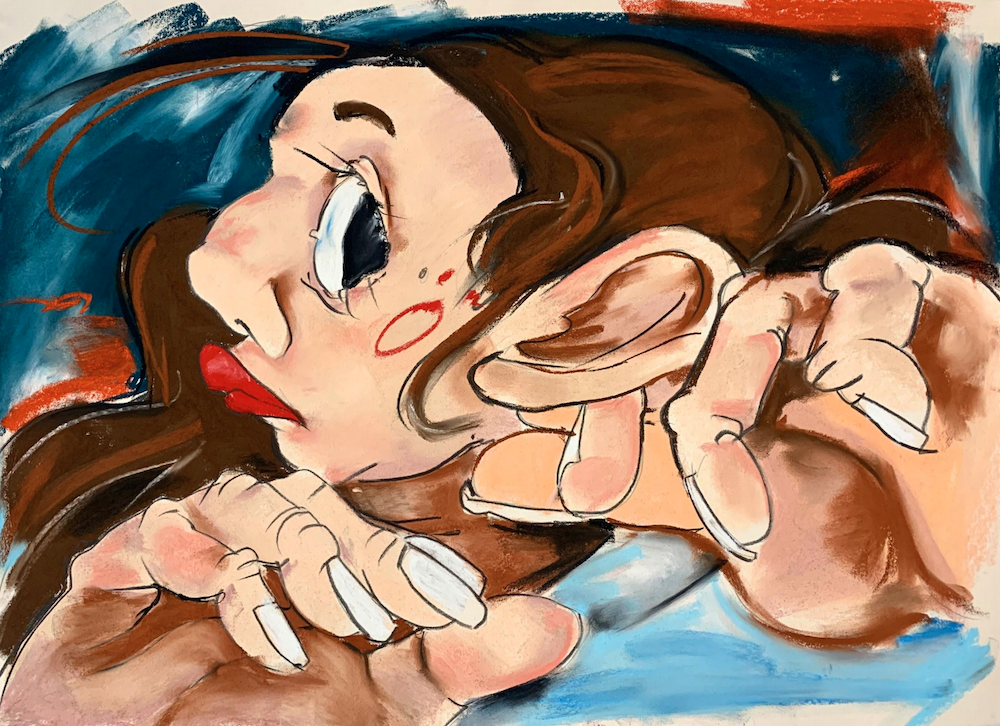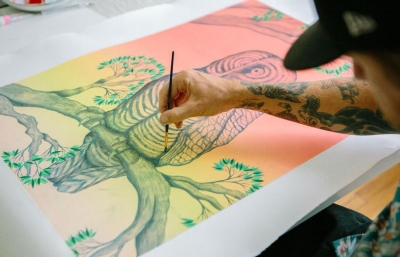A ray of light from the tunnel. Even as many of our daily activities remain on pause for the time being, there are a few art shows beginning to emerge in the virtual space. One we’ve had our eyes on is the upcoming show Tigre y Paloma at 1969 Gallery featuring the newest pieces from Cristina BanBan, who has taken up residency in New York. Her newest works, made on canvas and paper, address intimacy, loneliness, communal gatherings and familial environments, feel so relevant to these times.
1969 Gallery presents Tigre y Paloma, Cristina BanBan’s second solo exhibition at the gallery, consisting of recent paintings and works on paper made since moving to New York City.
The exhibition title comes from “El poeta pide a su amor que le escriba…” (trans. “The poet asks his love to write”), a poem by renowned Spanish poet Federico García Lorca from his famous work Sonetos del Amor Oscuro (trans. Sonnets of Dark Love). In Lorca’s poem, he speaks of waiting in isolation, begging for his lover to write back to him and “fill his madness with speech.” He compares his lover to tigre y paloma (trans. “a tiger and dove”), because of the mix of passion and tenderness he feels for him.
Cristina BanBan’s latest works reflect upon her hometown, popular figures in Spanish culture and being apart from her family during a worldwide pandemic. In contrast with works from the artist’s debut solo exhibition at 1969 Gallery in January 2019, which depicted the exciting, bustling landscape of New York City, these new works are filled with nostalgia and memory. El Prat De Llobregat, 2PM, the largest painting in the exhibition, depicts the artist’s family members eating and talking; one figure can be seen turning away with a remote control to watch TV, while a lone figure in vivid green, the artist’s grandfather, faces away from the viewer to have a siesta.
In contrast with the spirited mood of this family portrait, Homesick, a self-portrait, depicts the artist in isolation, surrounded by family photos. She watches a candle burn while reflecting on memories of home, much like “the flower that withers” in Lorca’s poem. It is a collage of time.
Most of the works on paper included in the exhibition are portraits of lone figures confronting their inner feelings and emotional states. Angustia (trans. Anguish), a colored pencil work on paper, depicts a woman crying with her hands in front of her face. This piece stands out among the others, as the rendering of the figure is gaunt compared to some of BanBan’s more exaggerated, plump figures. The choice of rendering the figure this way seems deliberate in identifying a feeling of desperation or “withering” from grief. In another piece, Juana, a figure stares at the viewer pensively, with her hands crossed. This piece, while also expressing grief, represents anxiety in a calmer way, as if its context precedes that of Angustia.
The paintings and works on paper in Tigre y Paloma complement each other to tell a larger, autobiographical story of the artist’s relocation to New York City. The paintings portray figures in interior environments interacting with other people, while the works on paper act as a microscope examining the feelings of the subject, often the artist herself, who has made the move.
Cristina BanBan (b. 1987, Barcelona) lives and works in Brooklyn, New York. She earned a Bachelor of Fine Arts from the University of Barcelona and is represented by 1969 Gallery (New York). Recent group exhibitions include Fredericks & Freiser (New York, NY), The Hole (New York, NY) and 68 Projects (Berlin, Germany). Upcoming exhibitions at Richard Heller Gallery (Los Angeles), Stems Gallery (Brussels), WOAW (Hong Kong) and Albertz Benda (New York). BanBan has also participated in art fairs including Untitled Miami, and Volta Basel, and her work is held in many private collections internationally. Her work has received critical acclaim by T-Spain, The New York Times Style Magazine, Vogue Magazine (Germany), Elephant and other publications.



